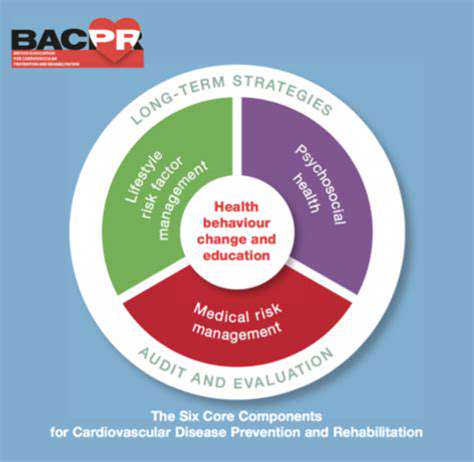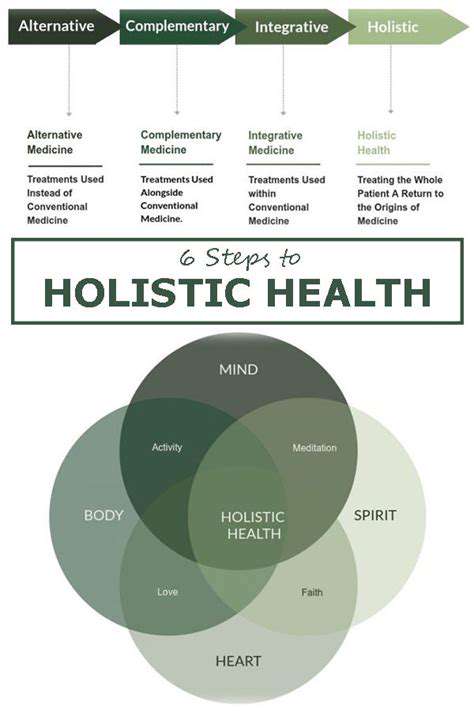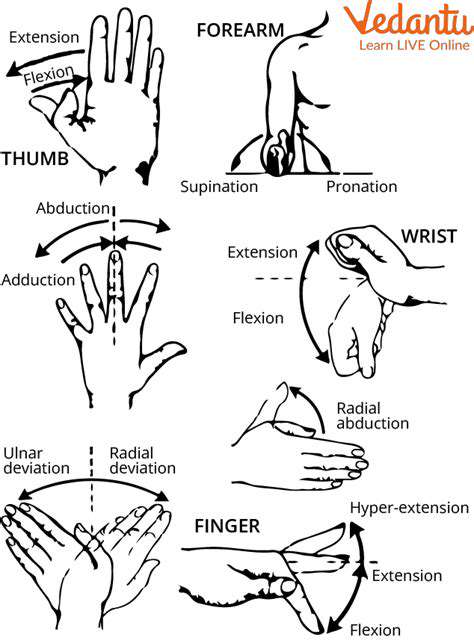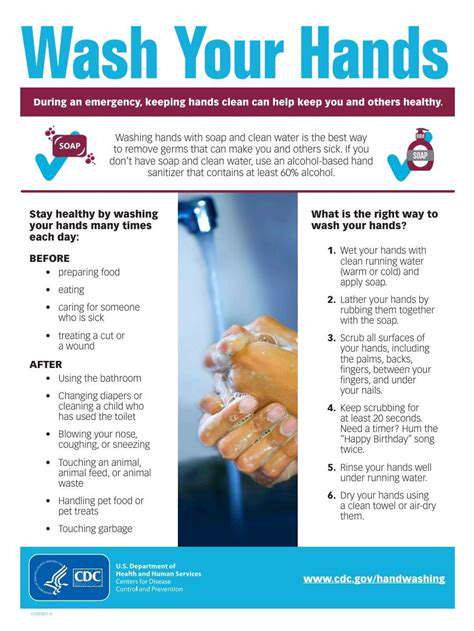The Importance of Ergonomics in Hand Health
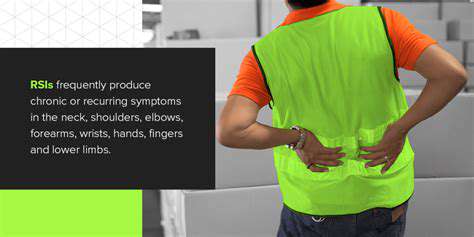
Understanding Repetitive Strain Injuries
Repetitive strain injuries (RSIs) are a significant concern in today's world, especially for those engaged in occupations requiring repetitive motions or prolonged exposure to forceful exertions. These conditions, often developing gradually, can cause debilitating pain and discomfort, impacting daily life and work productivity. Understanding the root causes of RSIs is crucial for prevention and effective management. The repetitive nature of the movements places immense stress on tendons, muscles, nerves, and ligaments, which can lead to inflammation, pain, and impaired function.
Identifying the early warning signs of an RSI is paramount. Many people dismiss initial symptoms, leading to a delay in seeking appropriate medical attention. However, early intervention can significantly improve recovery outcomes and prevent the condition from worsening. Prolonged discomfort in the affected area, such as the hands, wrists, or shoulders, should not be ignored, and consulting a healthcare professional is essential.
The Impact on Daily Activities
Repetitive strain injuries can significantly impact an individual's ability to perform everyday tasks. Simple activities like writing, typing, or using a computer mouse can become excruciatingly painful. The pain can radiate to other parts of the body, creating a cascade of discomfort and hindering overall well-being. This can lead to a decrease in productivity at work and a reduction in participation in social activities.
The resulting limitations can severely affect an individual's quality of life, impacting their ability to engage in hobbies, spend time with loved ones, and maintain a fulfilling social life. The emotional toll of an RSI can be just as significant as the physical discomfort, leading to stress, anxiety, and depression.
Risk Factors and Prevention Strategies
Several factors contribute to the development of repetitive strain injuries. These include prolonged exposure to forceful exertions, repetitive movements, awkward postures, inadequate rest breaks, and improper body mechanics. Identifying and mitigating these risk factors is crucial in preventing RSIs. Ergonomic assessments and adjustments in the workplace can often significantly reduce the risk.
Implementing proper posture and incorporating regular stretching and exercise routines are equally important preventative measures. Taking frequent breaks during prolonged work sessions is essential to allow the muscles and tissues to recover, reducing the risk of strain and injury.
Diagnosis and Treatment Options
Accurate diagnosis of repetitive strain injuries is crucial for effective treatment. A thorough examination, including physical assessments, medical history review, and potentially imaging tests, will help determine the extent of the injury and appropriate treatment strategies. Various treatment options are available, ranging from conservative methods like rest, ice, and physical therapy to more advanced interventions like injections or surgery in severe cases.
Long-Term Management and Rehabilitation
Repetitive strain injuries often require a multifaceted approach to long-term management and rehabilitation. This includes not only addressing the immediate pain and discomfort but also focusing on restoring full function and preventing future recurrence. Physical therapy plays a vital role in strengthening the affected muscles, improving range of motion, and restoring proper body mechanics. Modifying work tasks or adopting ergonomic solutions in the workplace is often necessary to prevent re-injury.
Patient education and self-management strategies are also essential components of long-term rehabilitation. Learning to recognize warning signs, practicing proper body mechanics, and taking proactive steps to prevent further injury are critical for long-term recovery and well-being. A multidisciplinary approach involving healthcare professionals, occupational therapists, and ergonomic specialists can significantly contribute to successful outcomes and prevent future issues.
Assessing Your Workstation: Identifying Ergonomic Hazards
Identifying Common Ergonomic Hazards
A crucial first step in assessing your workstation is recognizing the potential ergonomic hazards present. These hazards can stem from various factors, including the chair you sit in, the height of your desk, and the position of your monitor. Improper posture, repetitive motions, and awkward positions are all significant contributors to discomfort and long-term musculoskeletal problems. Failing to address these issues can lead to a range of health problems, from minor aches and pains to more serious conditions like carpal tunnel syndrome and back injuries.
Careful observation of your daily work routine and the arrangement of your workspace is key. Think about how you interact with your computer, how frequently you reach for items, and the overall comfort level of your setup. By identifying these potential hazards early, you can take proactive steps to mitigate them and create a healthier work environment.
Evaluating Your Chair
Your chair is a fundamental component of your workstation's ergonomics. An unsuitable chair can lead to significant back pain, poor posture, and circulation issues. Look for features like adjustable height, lumbar support, and armrests. Ensure the chair provides adequate support for your lower back, maintaining a natural curve. Consider the material and cushioning. A supportive chair is designed to distribute weight evenly, promoting comfort and reducing pressure points that can lead to discomfort.
If your chair isn't adjustable or doesn't provide sufficient support, you may need to consider investing in a more ergonomic chair. A well-fitted chair can significantly improve your posture and overall comfort during extended periods of sitting.
Assessing Desk and Monitor Placement
The height of your desk and the positioning of your monitor are critical for maintaining a neutral posture. An improperly positioned monitor can lead to neck strain and eye fatigue. Ensure your monitor is positioned at or slightly below eye level to avoid straining your neck. The distance between your eyes and the monitor should be approximately an arm's length away. Proper desk height is essential for maintaining a neutral spine position, avoiding excessive bending or reaching.
A properly adjusted desk can significantly reduce strain on your body. Experiment with different heights and positions to find the most comfortable and ergonomic setup for your individual needs.
Analyzing Keyboard and Mouse Usage
The way you use your keyboard and mouse can significantly impact your overall posture and risk of injury. Ensure your wrists are straight and aligned with your forearms when typing. Avoid bending or twisting your wrists excessively. Your keyboard should be positioned directly in front of you, and your mouse should be within easy reach. Using a wrist rest can provide additional support for your wrists and prevent discomfort.
Understanding Repetitive Strain Injuries
Repetitive strain injuries (RSIs) are a common concern in many jobs, particularly those involving prolonged computer use. Repetitive motions and awkward postures can lead to inflammation, pain, and decreased functionality in the affected areas. Understanding the potential for RSIs is vital for preventing them. Monitoring your posture and taking regular breaks to stretch and move your body can help mitigate the risks. Listen to your body and take action if you experience any discomfort or pain.
Implementing strategies for minimizing repetitive movements, such as adjusting your work schedule to incorporate regular breaks and using ergonomic tools, can significantly reduce the risk of developing repetitive strain injuries. Regular stretching and taking breaks are essential for maintaining overall health and well-being.
Considering Workstation Accessories
Ergonomic accessories can be valuable tools for enhancing your workstation's effectiveness and reducing discomfort. Items like wrist rests, adjustable keyboard trays, and document holders can all contribute to a more comfortable and supportive workspace. These accessories can help maintain proper posture, reduce strain on your wrists and hands, and promote a more relaxed work environment. Consider the specific tasks you perform at your workstation and choose accessories that address your unique needs.
Investing in these accessories can improve your comfort and productivity, reducing the risk of long-term health problems associated with poor posture and repetitive motions. By carefully evaluating and incorporating these tools, you can create a truly ergonomic and supportive workstation.
The Role of Proper Posture and Hand Position
Posture for Hand Health
Maintaining proper posture is crucial for preventing strain and injury to the hands and wrists. Poor posture, often associated with slouching or hunching, can lead to misalignment of the spine and shoulders, which in turn puts undue stress on the muscles and joints in the hands and forearms. A straight spine, shoulders relaxed and back straight, allows for natural movement and reduces the risk of repetitive strain injuries (RSIs) that can affect the delicate structures of the hand, such as tendons and nerves. This alignment also helps ensure that the hands are positioned in a neutral, comfortable, and less stressful way throughout the workday or any activity that involves hand use.
Consistent awareness of your posture, especially during prolonged periods of work or activity, is key. Regular adjustments and breaks to stretch and realign the body can significantly reduce the risk of developing musculoskeletal issues. Understanding how your posture affects your hand position is essential for creating a comfortable and safe work environment. By consciously maintaining good posture, you directly support healthy hand function and minimize the likelihood of future problems.
Hand Position for Optimal Performance
Proper hand position is fundamental to minimizing strain and maximizing performance. When performing tasks that involve repetitive hand movements, like typing or using a mouse, maintaining a neutral wrist position is paramount. Avoid bending your wrists excessively upward or downward, as this can put undue pressure on the tendons and ligaments within the hand and wrist, increasing the risk of carpal tunnel syndrome or other related conditions. A neutral wrist position and relaxed fingers are crucial for minimizing strain, promoting blood flow, and ensuring optimal hand function.
Consider the tools and equipment you use. Ergonomic keyboards and mice can significantly improve hand position and reduce strain. Properly fitting gloves can also play a role in hand position and support. Paying attention to the position of your hands relative to your workspace and the tools you use will help ensure that you are working in a way that minimizes strain and maximizes comfort. Consistent practice and mindful awareness of your hand position can prevent repetitive strain and improve overall hand health.
Impact of Hand Position on Wrist and Forearm
The position of your hands directly impacts the strain on your wrists and forearms. When your hands are positioned in a neutral, relaxed position, the stress on the wrist and forearm joints is minimized. Conversely, awkward or forced hand positions can lead to repetitive stress injuries (RSIs) in these areas. These injuries can result in pain, discomfort, and reduced functionality in the wrist and forearm, which can significantly impact your ability to perform everyday tasks. Understanding the interconnectedness between hand position, wrist, and forearm health is crucial for creating a comprehensive approach to ergonomic well-being.
The wrist and forearm act as support structures for the hands. Maintaining healthy hand positions prevents undue stress on these supporting areas. This, in turn, promotes proper blood circulation and reduces the risk of developing chronic pain conditions. The wrist is particularly vulnerable to strain from repetitive motions and awkward postures, highlighting the importance of consciously maintaining good hand position throughout the day. By focusing on ergonomic hand positions, you indirectly enhance the health and function of your entire upper limb.
A well-positioned hand reduces the risk of developing conditions like carpal tunnel syndrome. By adopting proper hand postures, you contribute to the overall well-being of your musculoskeletal system. The connections between your hands, wrists, and forearms are vital to understand when designing a healthy workspace and performing activities that involve hand usage. Maintaining proper hand position is an essential aspect of ergonomic practices, ensuring comfort, preventing injuries, and promoting overall hand health.
Choosing the Right Tools and Equipment: Enhancing Hand Comfort
Choosing the Right Hand Tools
Selecting appropriate hand tools is crucial for maintaining comfort and preventing injuries. Consider the type of task, the material being worked with, and the overall ergonomics of the tool. A well-designed tool will reduce the strain on your hands, wrists, and forearms, leading to less fatigue and a greater likelihood of completing the job successfully. Investing in quality tools that fit your hand and work style is an investment in your long-term hand health.
For example, using a claw hammer with a comfortable grip and a proper weight distribution will help prevent hand fatigue during repetitive hammering tasks. Likewise, specialized tools designed for specific materials, such as pliers for gripping various metal types, can significantly reduce the risk of hand strain and injury.
Grip and Handle Ergonomics
Ergonomic handles are specifically designed to reduce strain on the hands and wrists during prolonged use. Features like textured grips, contoured shapes, and adjustable handle sizes contribute to a more comfortable and secure grip. These features are essential for tasks that require extended periods of holding or manipulating tools. Choosing tools with these ergonomic considerations can dramatically improve user comfort and reduce the risk of repetitive strain injuries.
Material Considerations
The material of the tool significantly impacts its comfort and durability. For instance, a lightweight, yet strong tool will be more manageable for prolonged use. Consider the material's resistance to wear and tear, especially when working with harsh or abrasive materials. Using the right material for the job will not only increase comfort but also extend the lifespan of the tool itself. This is important for both cost-effectiveness and safety.
Power Tool Selection
When using power tools, the selection is as important as with hand tools. Consider the power output, speed controls, and any safety features designed to minimize risk. For example, tools with vibration dampening mechanisms are critical for reducing the transmission of harmful vibrations to the hands and wrists. Proper power tool selection is crucial for preventing hand injuries and discomfort.
Proper Posture and Technique
Maintaining proper posture and technique while using tools is essential for hand comfort. Avoid twisting or straining your hands and wrists unnecessarily. Take frequent breaks to allow your hands to rest and recover. Proper posture is not only about preventing injury but also about maximizing efficiency and minimizing hand fatigue.
Safety Equipment and Protective Gear
Don't underestimate the importance of safety equipment. Gloves, hand guards, and other protective gear can shield your hands from potential hazards, like cuts, abrasions, and extreme temperatures. Using the appropriate safety equipment is a crucial component of maintaining hand comfort and preventing injuries in the long term. Investing in these protective measures can prevent significant problems down the road.
Maintenance and Tool Care
Regular maintenance of your tools is vital for ensuring their longevity and optimal performance. Keeping tools clean, sharpened, and lubricated can significantly improve their effectiveness and reduce the strain on your hands. This proactive care not only extends the life of your tools but also contributes to increased comfort and safety while using them. Tools that are well-maintained are safer and more enjoyable to use.
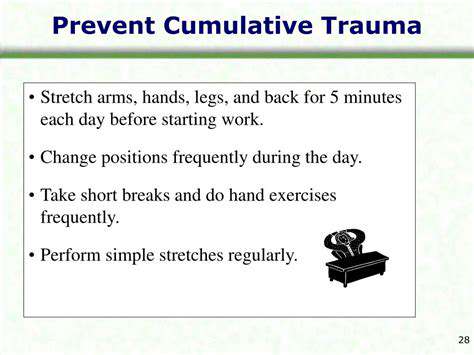
Read more about The Importance of Ergonomics in Hand Health
Hot Recommendations
- The Impact of the Digital Age on Hand Function
- The Role of Hands in Agricultural Innovation
- The Impact of Technology on Hand Artistry
- The Importance of Hand Care for Artists
- How Hand Control Enhances Robotic Surgery
- The Impact of Hand Strength on Physical Labor
- How Handwriting Influences Cognitive Development
- The Impact of Environmental Factors on Hand Health
- The Power of Hands in Building Community
- The Importance of Ergonomics in Hand Health


